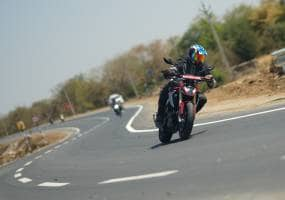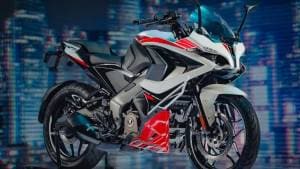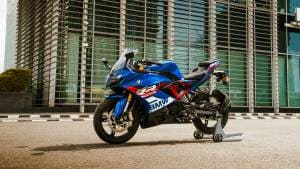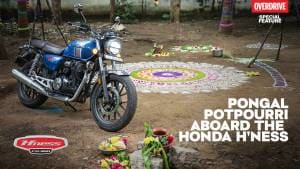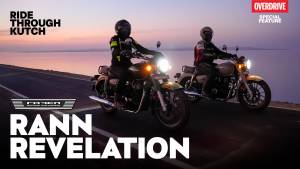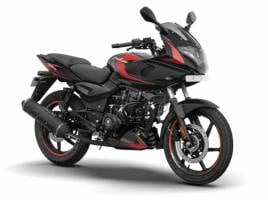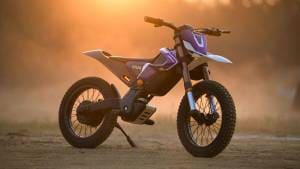Comparo: Bajaj Pulsar RS200 vs Yamaha YZF-R15 vs KTM RC 200
Focus is lovely. It makes the world a smaller place. But it also makes this world more specific, more driven towards a purpose. Focus in the context of motorcycles is lovelier still. It's a natural result of their evolution. From the generalist bikes evolved motorcycles that grew in specific directions to get better at specific roles.
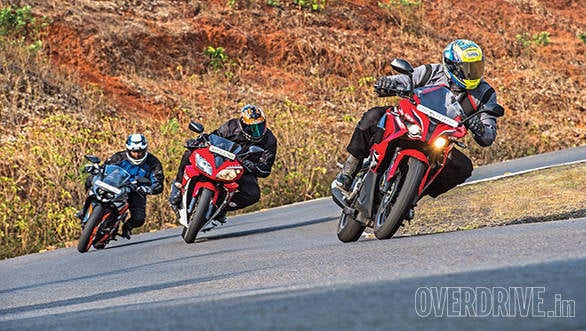
The sportsbike's role is one of the most fascinating. These motorcycles shed all pretence, all practicality in the hunt for pure performance. To corner as hard as possible. To accelerate until the rubber can no longer keep up. To put the biggest freaking numbers on the speedo and the biggest possible smile on the rider's mug. That's if you're into sportsbikes, of course.
At the bottom of our market, the Yamaha YZF-R15 was the first really focused sportsbike. It might have a small engine but its clarity of approach and role was unprecedented in our market. Staying with the affordable, the KTM RCs, the 200 in the context of this comparison, were next.
Now Bajaj has gone and Race Sport-ed a Pulsar. We thought it was time to visit this niche world and see what's what. Here goes.
Design, build and finish
For once this part is easy. The Yamaha's familiarity costs it. It looks smart but you want a fresher look, a newer angle to it. On the flip side, its record in India is impeccable when it comes to build and finish. You really do have to mistreat the R15 if you're going to flake paint and make rust spots and rattle that fairing.
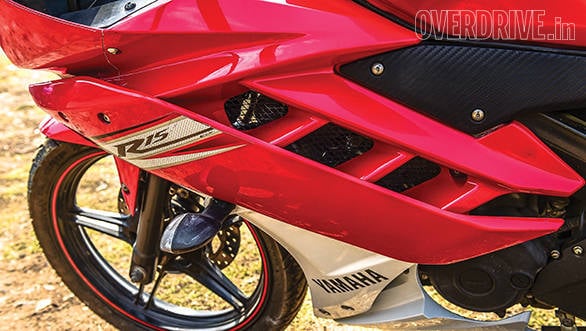 The Yamaha R15 is an extraordinarily friendly bike with a great chassis, unintimidating feel and immense ability but it looks familiar and not so special now
The Yamaha R15 is an extraordinarily friendly bike with a great chassis, unintimidating feel and immense ability but it looks familiar and not so special now
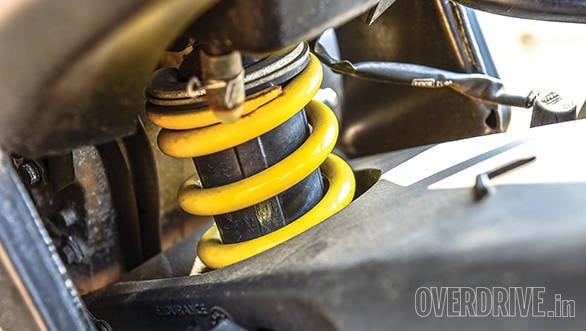
The KTM RC styling is also pretty interesting. There's a menace in the design as well as a KTM-ness that obviates the need to ask what brand the bike is. Pretty it is not. Finish levels are excellent and though the initial RCs did have some rattles, build quality is usually very good too.
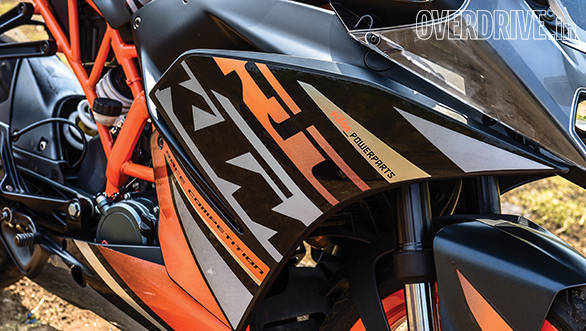 The stickers on the RC 200 are an optional extra
The stickers on the RC 200 are an optional extra
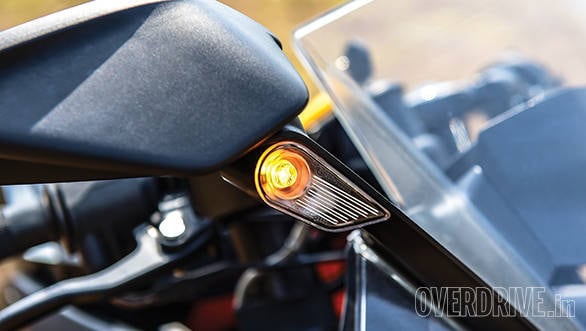 Note the sweet front indicators on the KTM
Note the sweet front indicators on the KTM
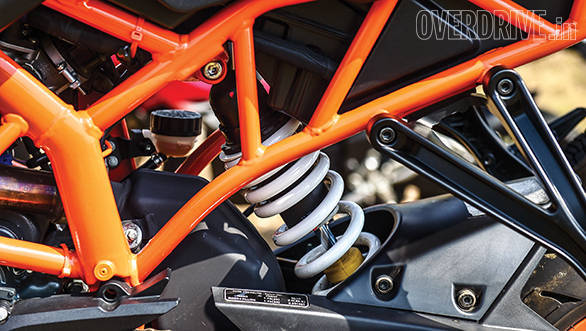
The Pulsar RS200 is, in this company, a woman in a short, come-hither red dress at an all-men black tie soirée. Wearing way too much makeup, hair extensions, fluorescent eye shadow and a tiara. The issue is way too much design. Too much fussing, too many lines, too much going on. It makes you look again and again and you're never entirely happy with what you see. That said, standing next to it, it does have presence. And yes, like the lady at the party, people do notice it. Unfortunately, while the RS200's build was as good as Bajaj currently achieves, finish levels can improve a bit. The culprits are the usual - the plastics on the inside of the fairing which don't quite sit just right and so forth. That said, the tail lamp design is just unspeakable. There's no way to make your peace with it. Ugly, too ornate and it absolutely doesn't go with anything else on the motorcycle.
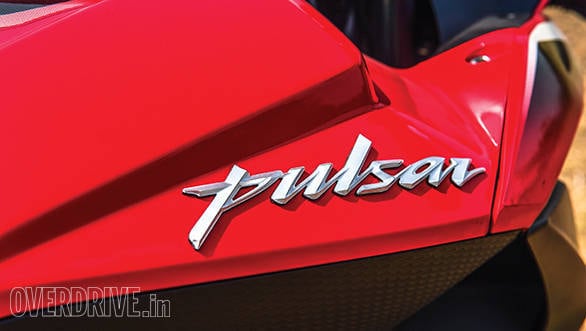 There are some finish issues in the Pulsar, like the panel here
There are some finish issues in the Pulsar, like the panel here

So winner? I think the KTM RC wins. It looks unique in a nice way. The R15 looks too familiar to win but it's nice too. The RS200 is also unique but not in a classy way.
Engines, performance and economy
The R15 is naturally outgunned here. Both its competitors boast bigger engines that make substantially more power and torque. So it's going to have to work a lot harder to keep up. But that's not what gets you. As you know, the R15's liquid cooled engine is a gem. It's a smooth number that'll sit at redline all day if you as much as dream of that. But its age is showing. In this company, it felt like the slowest engine to pick up revs and both the RS and RC handle high rev work with better comportment even if the margin is small. I do prefer the Yamaha's ultra-slick gearbox's shift quality to the Bajaj-KTM typical light and effort-free shifts but it's a small advantage that means the R15 is going to get left behind in the powertrain stakes.
[youtube=http://www.youtube.com/watch?v=rROmQg__zH8&w=586&h=340]
Between the RC and the RS, the difference is finer. The RC wants its revs. Let the tacho drop below 6,000 and you're going to be shifting down to accelerate smartly. The RS engine feels more flexible. It might be slightly less powerful overall but it has torque lower in the rev band than the RC which makes it easier to ride.
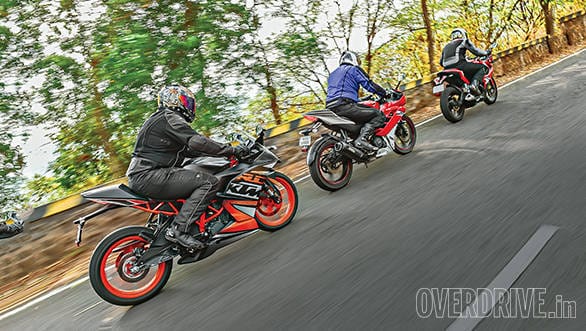
But if you think about these bikes in terms of their intended role as sportsbikes then the story changes in flavour. Both the Yamaha and the KTM are purer sportsbikes. They like to rev and use high revs to deliver their performance. From that perspective, the Pulsar takes the RS bit less seriously than the other two.
So, numbers time. The RC 200 is the quickest to 60kmph at 3.8s and the RS200 isn't far behind - 4.09s. The R15, naturally, is slower and it takes 4.9s. The Bajaj did post a slightly higher top speed than the KTM at 142kmph (versus 136.23 on the RC). The Yamaha maxes out at 124.5kmph. Note that these are actual GPS-measured speeds, not speedo readouts.
On the economy front, Bajaj trumps the KTM, posting 35.83kmpl overall which is better than the KTM's 29.85kmpl. The Yamaha, in this company is shockingly good on this front, posting an overall economy of 42.10kmpl on our tests.'
Ride, handling and braking
We have two kinds of frames here. The Yamaha and the Bajaj both use pressed steel twin spar frames. The KTM sticks with its favourite steel trellis configuration. All three boast preload adjustable monoshocks and only the KTM has the upside down shocks with radially mounted brake calipers. In stiffness or equipment, the KTM is vastly superior to the others on most counts, actually.
The Yamaha is a familiar package here. We know its chassis can dance pretty damn hard. The MRFs are capable and grippy. What we love about the R15 is how friendly and forgiving the chassis is. How hard you can push it and then realise it has still more to give.
Unfortunately for the Yamaha, the RC is all that and quite a bit more. The KTM's stiffer in suspension setup and that affects it more in bumpy corners but it's a sportsbike and a half. It's accurate, holds its line beautifully and the MRFs on the KTM are even better than the Yamaha's. The package is made for effortless cornering and the RC 200 is a very rewarding motorcycle to work hard in corners. Everything the Yamaha can do, the KTM does harder and better.
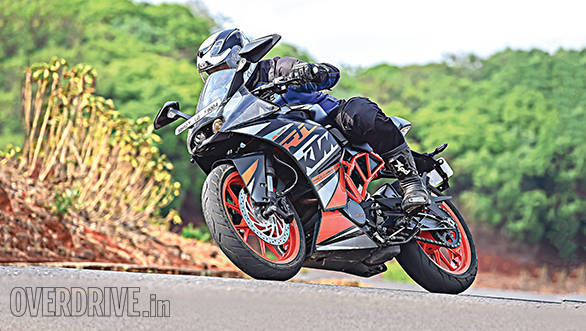 The RC 200 is a committed sportsbike that marries pure and fast cornering with a mildly achy-painy riding position
The RC 200 is a committed sportsbike that marries pure and fast cornering with a mildly achy-painy riding position
The Pulsar is an interesting thing to have in this mix. From the NS to the RS, Bajaj have sharpened the steering and that's led to a shorter wheelbase. And Bajaj have given it slightly stiffer springs and very, very good new MRF Tyres. The result is a motorcycle that's surprisingly satisfying to corner hard. It isn't as stiff as the KTM so bumpy corners are dealt with better and it isn't so soft that it wallows in fast ones either. In short, all three corner very well and it's only going ten-tenths that you'll spot the fact that the focus of the Yamaha and the innate sweetness of the KTM feel better than the RS.
In ride terms, the Yamaha is pretty good. Its suspension is soft enough to absorb everything but has a sportsbike-y feel to it that never shows any lack of control over its springs or wheels. The KTM is much stiffer and that means bad roads are felt more. A lot more. The Pulsar sits in the middle and does a remarkable job of it.
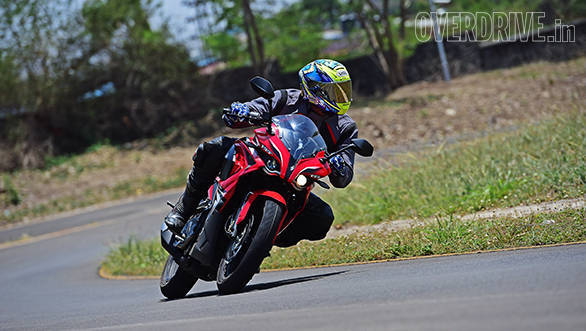 The Pulsar is a striking face but an extremely fussy design that has presence but isn't very pretty
The Pulsar is a striking face but an extremely fussy design that has presence but isn't very pretty
But the real difference comes out when two sets of twisties are connected by a bad road. Both the Yamaha and the Bajaj can be bashed right through the potholes without a care. Stand up on the pegs, have gas slightly open over the bumps and they're both composed and going through. The KTM cannot do this. It isn't required to by its role and it's just stiff enough to make you slow down and pick the path of least resistance.
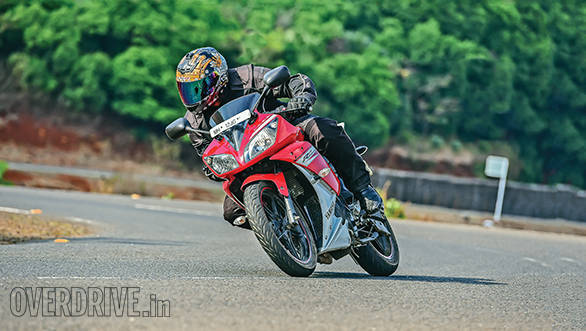 The Yamaha R15 is an extraordinarily friendly bike with a great chassis, unintimidating feel and immense ability
The Yamaha R15 is an extraordinarily friendly bike with a great chassis, unintimidating feel and immense ability
On the brakes, the KTM has its usual set of adequate brakes that never quite seem to have enough bite. The Yamaha has lovely anchors that work well and the Pulsar has a set that's friendly in bite. None lack outright power and only the Bajaj allows you to purchase optional front-wheel ABS.
Winner? The KTM is the purest motorcycle here as a sportsbike but the Bajaj has real world riding down pat. It handles bumps well, corners much harder than any Pulsar before it, especially at ten-tenths pace and that makes it extremely satisfying to corner hard.
Ergonomics and features
In terms of features there are only minor differences between the trio. The Yamaha and the Bajaj use analog rev counters that are easier to read than the KTM digital tacho. The KTM has the only gear position readout as well as a full house of on-board stats.
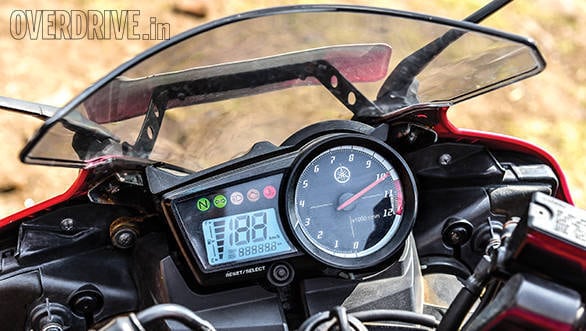 The Yamaha uses analog rev counters that are easier to read than the KTM digital tacho
The Yamaha uses analog rev counters that are easier to read than the KTM digital tacho
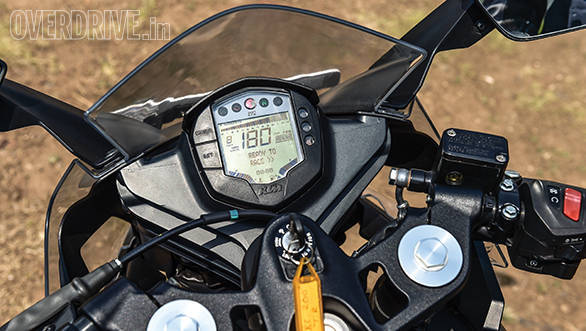 The KTM has the only gear position readout as well as a full house of on-board stats
The KTM has the only gear position readout as well as a full house of on-board stats
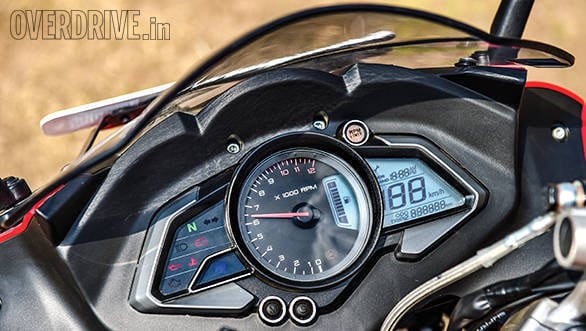 Meters on the Bajaj Pulsar RS200 are familiar and don't get a gear position sensor
Meters on the Bajaj Pulsar RS200 are familiar and don't get a gear position sensor
You almost wish the ergos were that kind of close. They aren't. Yamaha made the R15 v2 more focussed and that makes it the least comfortable of all three to ride through city traffic. Sitting pillion is also the most awkward on the Yamaha. In contrast, the KTM is less committed. The bars are higher up and further forward than the Yamaha which feels more natural to ride with but hurts in slow going. The worst part of the KTM experience is the RC's rider seat which is hard, badly shaped and will lead to a butt ache very early on in the ride. This is a surprise because the Duke's seat is also famously hard but as both Rishaad and I have found, it requires a few thousand kilometres of breaking in and then it's the most comfortable seat you'll ever use.
The Pulsar in this company feels distinctly different. Unlike both the KTM and the Yamaha, you don't feel like you're sitting in the bike. The Pulsar feels taller overall and you feel like you're seated on top of the bike. The clip on style handlebar has a very dramatic riser so despite a sporty riding positing, it isn't a wrist-killer at all. In fact, compared to the KTM and the Yamaha, you can sit almost upright if you like. This isn't a problem because adopting a full race crouch is easy. I did manage to bang my helmet visor on the risers a couple of times but the RS200's riding position is a very good balance between a full race setup and something more suited to street use.
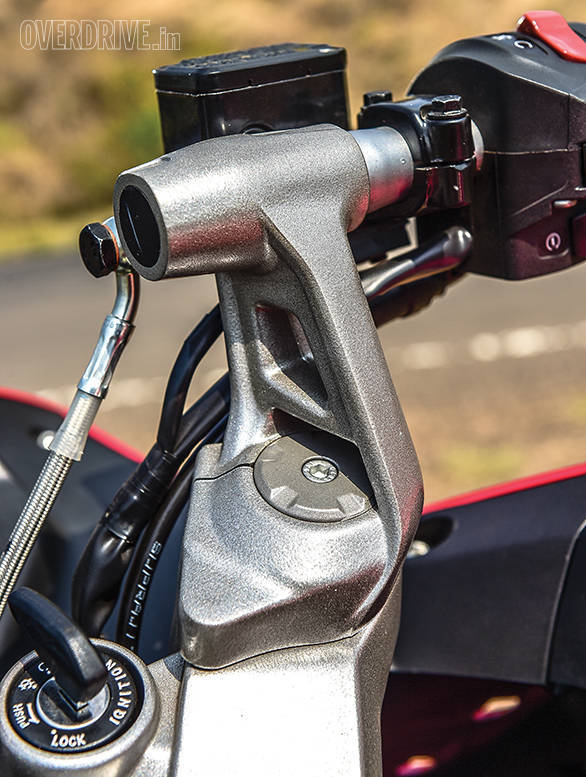 Massive risers on the RS200 created a sporty riding position that's happy on the street or on the track
Massive risers on the RS200 created a sporty riding position that's happy on the street or on the track
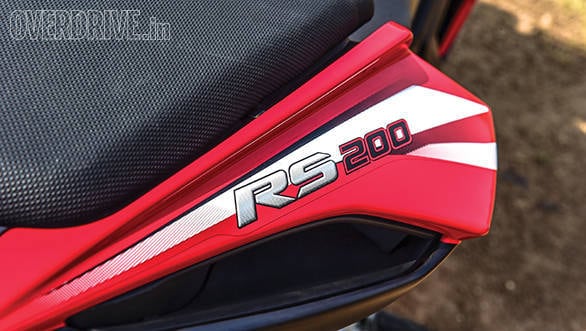 Look at these neat hand holds for the pillion on the RS200
Look at these neat hand holds for the pillion on the RS200
Pillions? Pulsar has the best accommodations followed by the RC which works better than what it looks like. The R15 is a true sportsbike - it doesn't want to have pillions and makes that known very clearly.
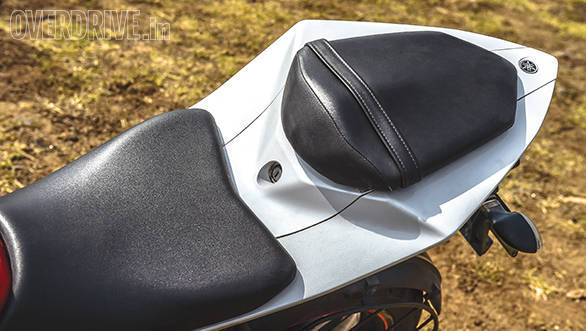 The pillion seat on the Yamaha is amongst the least comfy in the whole business
The pillion seat on the Yamaha is amongst the least comfy in the whole business
Verdict
We have a soft spot the size of a planet for the Rs 1.36 lakh (on-road Mumbai) Yamaha R15. It's a lovely little motorbike that takes its job as a sportsbike very seriously. And it acquits itself rather well in the city, is okay on the highway and terrific on a racetrack. But comfy it isn't. And its age is showing. It was peerless for a long time (yes, even after that Honda CBR150R came - which is why the wee Honda isn't in the comparo) but that phase is now over.
For just Rs 15,000 more you can have the RS200 with ABS - the non-ABS RS is only Rs 3,000 more expensive! The ergonomics aren't as focussed as the Yamaha but the chassis has genuine ability that'll surprise you. And the Bajaj manages that without being as uncomfortable as sportsbikes are supposed to be.
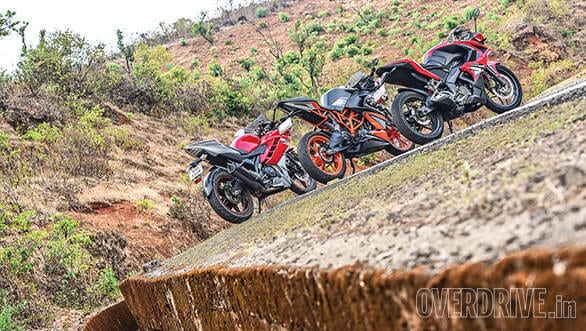
Pay another Rs 36,000 and you can have the KTM. It might have shared its development phase with the RS but it's a dramatically different motorcycle. KTM likes to not compromise on its role focus and that gives the RC an intense focus on performance. It's a much purer sportsbike experience than the Pulsar and is a very intensely joyous motorcycle to ride - and that's the reason it's the bike here that I would buy. But attendant to the joy is a seat that'll hurt, bars that are hard work on daily rides, a canted forward riding position and no ABS.
Which brings us back to the Pulsar. The RS is unreservedly the best motorcycle to wear the Pulsar name. I don't care if it's the fastest but if RS riders don't go track racing, they'll miss out on that astonishing cornering competence. The KTM is undoubtedly the best motorcycle on test here. But the Pulsar is the smartest choice. It's got the better price, along with enough performance and ability. And Bajaj have once again turned a looser role focus into an advantage. Heck, take that fairing off and you actually have the best naked streetbike to wear the Pulsar name. The RS is the easiest of the three to live with and thus the best deal here. Focus is lovely but the RS lives in a bigger world than the KTM.
KTM RC200 vs Yamaha R15 vs Bajaj Pulsar RS 200
| Bajaj Pulsar RS200 | |
| ENGINE | |
| Type | Liquid-cooled single triple spark FI |
| Capacity | 199.5cc |
| Valvetrain | 4 valve SOHC |
| Max power | 24.5PS@9,750rpm |
| Max torque | 18.6Nm@8,000rpm |
| Power/Weight | 148.48PS/tonne |
| UNDERPINNINGS | |
| Suspension (F) | Telescopic forks |
| Suspension (R) | Gas-charged monoshock |
| Brakes Front/Rear | Optional front ABS, 300mm / 230mm disc |
| Tyres Front/Rear | 100/80-17 / 130/70-17 |
| PERFORMANCE | |
| 0-100kmph | 9.92s |
| 0-400m | 17.07s/121.78kmph |
| Top speed (kmph) | 142 |
| FUEL EFFICIENCY | |
| Highway (kmpl) | 44.9 |
| City (kmpl) | 32.8 |
| Overall (kmpl) | 35.8 |
| GENERAL DATA | |
| Wheelbase (mm) | 1,355 |
| Kerb Weight (kg) | 165 |
| Price OTR Mumbai | Rs 1.51 lakh (ABS) |
| KTM RC 200 | |
| ENGINE | |
| Type | Liquid-cooled single |
| Capacity | 199.5cc |
| Valvetrain | 4 valve DOHC |
| Max power | 25PS@10,000rpm |
| Max torque | 19.2Nm@8,000rpm |
| Power/Weight | 181.82PS/tonne |
| UNDERPINNINGS | |
| Suspension (F) | Upside down forks |
| Suspension (R) | Monoshock |
| Brakes Front/Rear | 280mm/230mm disc |
| Tyres Front/Rear | 110/70-17 / 150/60-17 |
| PERFORMANCE | |
| 0-100kmph | 9.87s |
| 0-400m | 16.74s/123.42kmph |
| Top speed (kmph) | 136.23 |
| FUEL EFFICIENCY | |
| Highway (kmpl) | 38 |
| City (kmpl) | 27 |
| Overall (kmpl) | 29.8 |
| GENERAL DATA | |
| Wheelbase (mm) | 1,340 |
| Kerb Weight (kg) | 137.5 |
| Price OTR Mumbai | Rs 1.87 lakh |
| Yamaha YZF-R15 | |
| ENGINE | |
| Type | Liquid-cooled single |
| Capacity | 149.8cc |
| Valvetrain | 4 valve SOHC |
| Max power | 17PS@8,500rpm |
| Max torque | 15Nm@7,500rpm |
| Power/Weight | 125.00PS/tonne |
| UNDERPINNINGS | |
| Suspension (F) | Telescopic forks |
| Suspension (R) | Link-type monoshock |
| Brakes Front/Rear | 267mm/220mm disc |
| Tyres Front/Rear | 90/80-17 / 130/70-R17 |
| PERFORMANCE | |
| 0-100kmph | 13.70s |
| 0-400m | 18.90s/110.6kmph |
| Top speed (kmph) | 124.5 |
| FUEL EFFICIENCY | |
| Highway (kmpl) | 52.3 |
| City (kmpl) | 38.7 |
| Overall (kmpl) | 42.1 |
| GENERAL DATA | |
| Wheelbase (mm) | 1,345 |
| Kerb Weight (kg) | 136 |
| Price OTR Mumbai | Rs 1.36 lakh |
Also read:
Bajaj Pulsar RS200 road test review
Bajaj Pulsar RS200 first ride review
Things you will love on KTM's RC 390 and RC 200 and things you won't
Spec comparison: Bajaj Pulsar RS200 vs Yamaha YZF-R15 vs Honda CBR250R vs KTM RC 200
.
